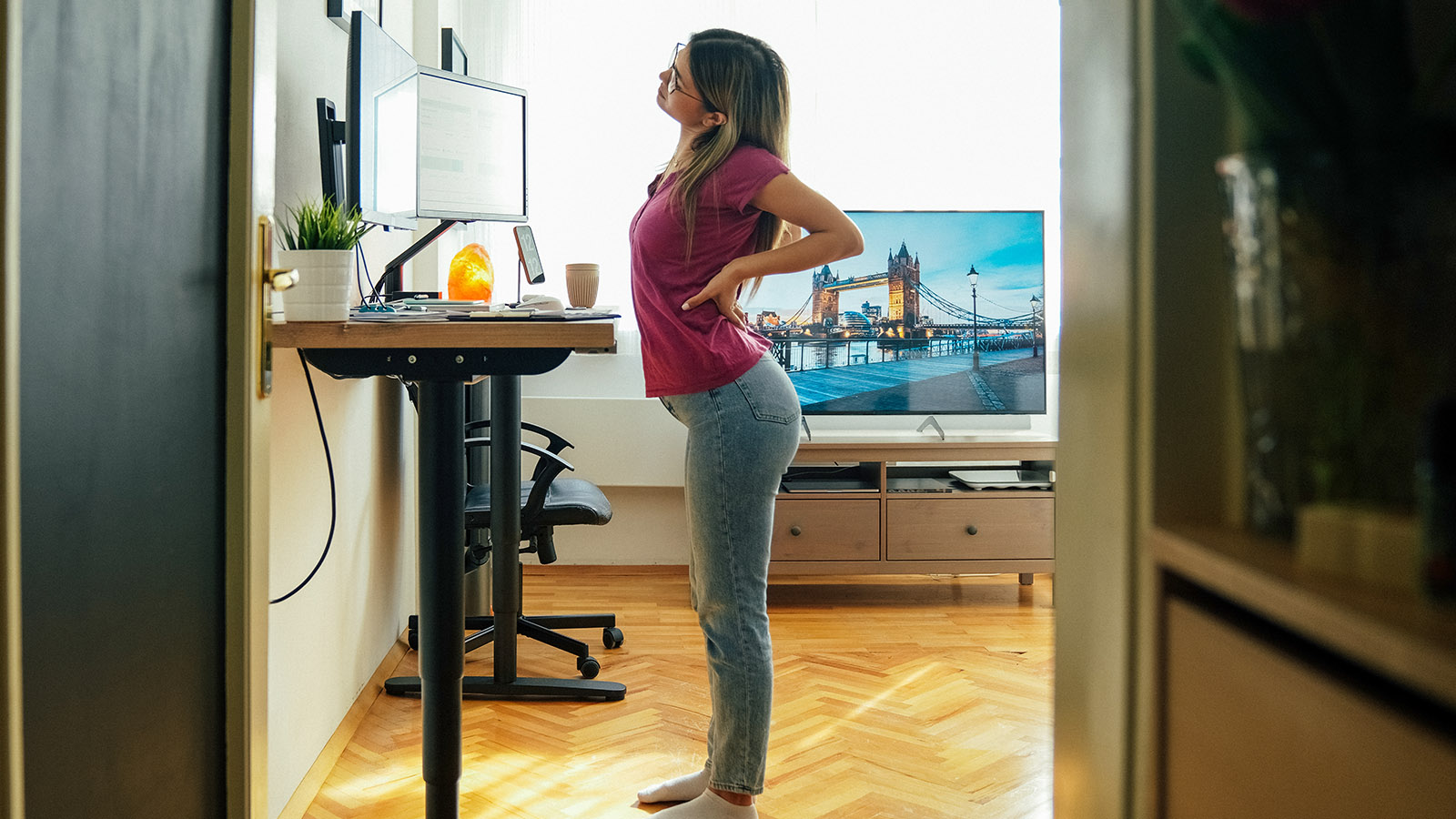Why Choose Physical Therapy First To Relieve Back Pain
Newer guidelines recommend that low back pain sufferers try non-drug treatments like physical therapy before turning to medications for relief. Learn how hands-on therapy helps.

By Dan Wu, PT, DPT, OCS, Physical Therapist
If you’re dealing with low back pain, it may be tempting to reach for an over-the-counter pain reliever or ask your doctor for a stronger medication so you can return to your normal routine quickly. But guidelines from the American College of Physicians recommend that low back pain sufferers try non-drug treatments such as physical therapy before turning to medications.
What many people don’t realize is that some medications cause serious side effects or, in some cases, put you at risk for addiction or accidental overdose. And, medications generally won’t fix the problem that caused your low back pain in the first place.
Although many cases resolve on their own with little treatment, an evaluation by a qualified physical therapist can help you recover from back pain safely and prevent future injury.
Physical therapists are highly trained, licensed professionals whose goals are to help patients relieve pain and improve movement and physical function. They treat health conditions and injuries using a combination of methods, including exercise, stretching, patient education, manual techniques, heat/cold therapy, and a home-exercise program.
How does a physical therapist develop a treatment plan for low back pain?
To develop your treatment plan, your physical therapist starts by asking questions about your low back pain, such as:
- When did the pain start?
- What makes it feel better/worse?
- What kind of work do you do?
- What activities/hobbies do you participate in?
- Have you had treatment for low back pain before?
- Have you had any imaging studies?
Your physical therapist will do a physical assessment to identify any weak or inflexible areas in your body that could be contributing to your low back pain. He or she also may identify problems with your posture or other movements, such as the way you lift heavy objects.
When recommending a treatment plan, your physical therapist takes into account the results of his or her assessment, the amount of pain you report you’re experiencing, and your scheduling availability. Initially, many treatment plans include 2-3 physical therapy sessions a week for about 4 weeks. Depending on your progress, you may need to continue treatment after your initial treatment plan is complete.
How does physical therapy treat low back pain?
Your physical therapist will use a combination of therapies to treat your low back pain. Many physical therapists use “hands-on” treatment methods such as soft-tissue mobilization techniques to work out areas of restriction or inflammation and joint mobilization techniques to relieve pressure on your spine.
Physical therapy also involves strengthening exercises and stretching.
- Stretches help lengthen tight low back/hip muscles and improve flexibility.
- Strengthening exercises address weak areas in your body to treat pain and prevent future injury.
Your physical therapist will show you how to perform each exercise and will make sure you’re doing them the right way.
The strengthening exercises often address the muscles in your hips and core (which is made up of your deep abdominal and low back muscles). They also help you improve flexibility in your hamstrings (the muscles that run down the back of your thighs) and your glutes (the muscles in your butt). In addition, your therapist will help you improve your posture and provide instruction on performing certain body movements in a way that minimizes the strain on your low back.
After trying out various exercises and stretches in a session, your physical therapist also may ask you to complete specific exercises and stretches at home that could include:
- Knee bends: Start by lying flat on your back on the floor. Alternate bending each knee into your chest. If you’re more flexible, bend both knees and hug them into your chest.
- Figure 4: Start by lying flat on your back with your feet on the floor and your knees bent. Cross one ankle over your opposite knee. Reach behind the thigh of the leg that’s still on the floor and use both hands to gently pull your entire leg toward your chest.
- Bridges: Start by lying on your back with your knees bent and arms resting on the floor by your sides. Slowly lift your butt/glutes off the floor so your body is in a straight line from your knees to your shoulders. Hold for a few seconds, and then slowly lower back down to the floor.
How long will it take to relieve my back pain with physical therapy?
The length of time you spend in physical therapy for low back pain treatment depends on how quickly your body responds and how long it takes you to achieve your individual goals.
Throughout your treatment, your physical therapist assesses how you’re doing and makes updates to your treatment plan. As you begin to get stronger and feel better, your therapy plan may change to include new exercises, additional repetitions, and added frequency.
If your pain has improved after the first 4 weeks of treatment, your physical therapist may decrease the frequency of your sessions to once or twice a week for another few weeks—or until you feel better and can achieve your goals.
What happens after I finish physical therapy for low back pain?
Your physical therapist will tell you what exercises you should continue to do at home so you can keep your muscles strong and flexible and prevent a future injury. You should pick a few different exercises and stretches each day to prevent your body from getting to used to certain exercises.
If you’re experiencing low back pain, physical therapy can help you avoid medication and get the relief you need.
Download the Virtua Health Guide to Back Pain, or call 856-246-4272 to request a consultation with a Virtua back pain specialist.
